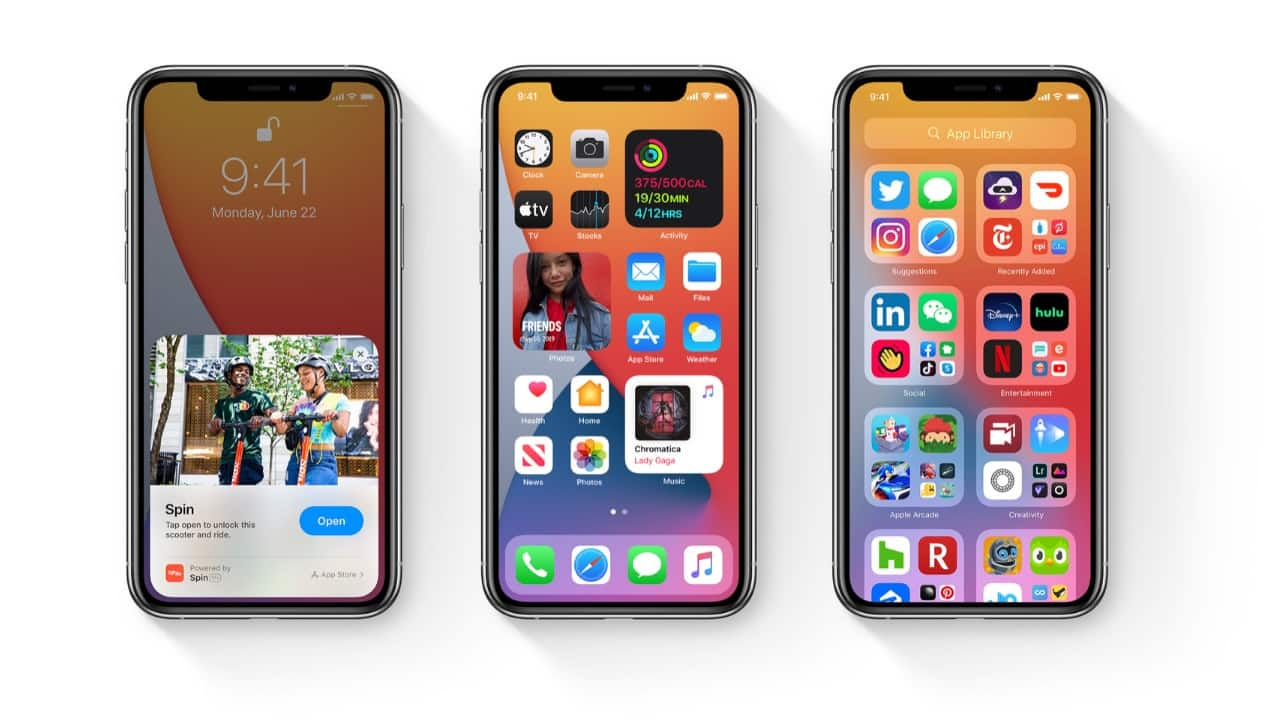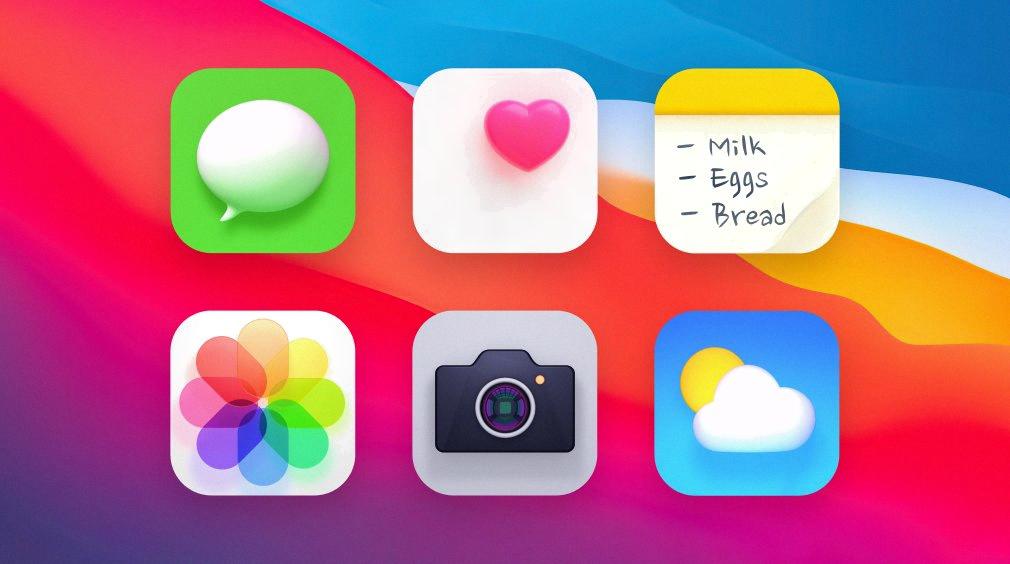In the world of iOS 14, customization is key. With the introduction of the Shortcuts app, users now have the power to personalize their iPhone’s home screen like never before. One of the most popular customization options is the ability to create 3D app icons, giving your device a fresh and unique look. In this article, we will delve into the process of creating these eye-catching icons and provide you with a step-by-step guide to get started.
Step 1: Shape it Up
To begin, you’ll need to create the shape of your 3D icon. Think about the app you’re customizing and how you can represent it in a three-dimensional form. For example, if you’re customizing the camera app, you might want to create a 3D camera icon. Use design software or apps like Procreate to sketch out your desired shape and ensure that it reflects the essence of the app.
Step 2: Add Some Drama
To make your 3D icon stand out, it’s important to create dramatic edging. This can be achieved by adding shadows and highlights to give your icon depth and dimension. Experiment with different brushstrokes and shading techniques to create a visually appealing effect. Remember, the goal is to make your icon look as close to real-life as possible.
Step 3: Fill in the Details
Now that you have the basic structure of your icon, it’s time to add the inner portion. Consider the specific details of the app you’re customizing and incorporate them into your design. For example, if you’re customizing a music app, you could add musical notes or headphones to the icon. This will make your 3D icon more recognizable and meaningful.
Step 4: Brushstrokes and Textures
To add even more realism to your 3D icon, it’s important to create larger brushstrokes and textures. This will give your icon a tactile feel and make it visually appealing. Experiment with different brush sizes and textures to find the perfect balance between detail and simplicity.
Step 5: Highlight the Top
To enhance the three-dimensional effect, focus on adding a main top highlight. This will make the icon look like it’s reflecting light from above. Use a lighter color or a gradient effect to create this highlight, and place it strategically to emphasize the shape and contours of your icon.
Step 6: Highlight the Bottom
Similarly, adding a main bottom highlight will create the illusion that your icon is casting a shadow or has depth. This will further enhance the three-dimensional effect. Experiment with different shading techniques to find the perfect balance between highlights and shadows.
Step 7: Final Touches
As you refine your 3D icon, pay attention to small details and make any necessary adjustments. Delete any raster or plus-signed elements that are no longer needed, and ensure that your icon looks polished and cohesive. Take your time to perfect the final touches and make sure your icon represents the app accurately.
Now that you have created your 3D icon, it’s time to implement it on your iOS 14 home screen. Open the Shortcuts app and select the app you want to customize. Choose a photo for your icon, name your shortcut, and save it. Your newly created 3D icon will now be displayed on your home screen, adding a personalized touch to your iPhone experience.
3D app icons offer a unique and visually appealing way to customize your iOS 14 home screen. By following the steps outlined in this guide, you can create stunning and personalized icons that reflect the essence of your favorite apps. So, why wait? Dive into the world of 3D customization and make your iPhone truly your own.

How Do You Customize Your iOS 14 App Icons?
To customize your iOS 14 app icons, you can follow these steps:
1. Start by selecting the “Open App” option on your device. This will allow you to choose the app that you want to customize.
2. Once you have selected the app, tap on the ellipsis (three dots) located in the upper-right corner of the screen. This will open a menu with additional options.
3. In the menu, select the “Choose Photo” option. This will give you the ability to add a photo that you want to use as the app icon.
4. You can then browse through your photo library and select the photo that you want to use. It’s important to note that the photo should be in a square format for best results.
5. After selecting the photo, you will be prompted to name the Shortcut or App. This is the name that will appear under the custom icon on your home screen.
6. Once you have named the Shortcut or App, tap on the “Add” button to save the Shortcut. This will create a new custom icon on your home screen that is personalized with the photo you chose.
By following these steps, you can easily customize your iOS 14 app icons with your own photos. Enjoy adding a personal touch to your home screen!

What is the Difference Between Flat Icons And 3D Icons?
Flat icons and 3D icons are two different design styles used in creating visual representations.
Flat icons, as the name suggests, are two-dimensional and lack depth. They typically have a simple, minimalist design with clean lines and bold colors. Flat icons are commonly used in modern design, as they offer a clean and sleek aesthetic. They are often used in user interfaces, websites, and mobile apps, as they are easy to recognize and navigate.
On the other hand, 3D icons are three-dimensional objects that have volume and depth. They are designed to mimic real-life objects and have a more realistic appearance. 3D icons can add a sense of realism and depth to a design, making it more visually appealing and engaging. They are often used in gaming, virtual reality, and augmented reality applications, as well as in architectural and product design.
Here are some key differences between flat icons and 3D icons:
1. Visual Appearance: Flat icons have a simple and minimalistic design, while 3D icons have a more realistic and detailed appearance.
2. Depth and Dimension: Flat icons lack depth and appear as two-dimensional objects, whereas 3D icons have depth, giving them a three-dimensional appearance.
3. Realism: Flat icons are more abstract and symbolic, while 3D icons aim to mimic real-life objects and can be more visually realistic.
4. Usage: Flat icons are commonly used in user interfaces, websites, and mobile apps, while 3D icons are often used in gaming, virtual reality, and augmented reality applications.
The main difference between flat icons and 3D icons lies in their visual appearance and depth. Flat icons are two-dimensional and minimalist, while 3D icons are three-dimensional and aim to mimic real-life objects. Both styles have their unique advantages and are used in different contexts based on the desired visual aesthetic and user experience.
How to Make iOS 14 Aesthetic With Custom App Icons?
To make your iOS 14 aesthetic with custom app icons, you can follow these steps:
1. Choose and download custom app icons: Look for a website or app that offers custom app icons in the aesthetic style you prefer. You can find numerous options on platforms like Pinterest, Etsy, or even through a simple Google search. Download the icons you like and make sure they are saved to your Photos app.
2. Prepare your new app icons: If the custom icons you downloaded are not in the correct format (PNG), you can convert them using a free online conversion tool. Ensure that each icon has a transparent background.
3. Create shortcuts for your apps: Open the Shortcuts app on your iPhone (it should already be preinstalled). Tap the plus icon in the top right corner to create a new shortcut.
4. Select “Add Action”: After opening the Shortcuts app, you will see a screen with various options. Select “Add Action” to proceed.
5. Search and choose “Open App”: In the search bar, type “Open app” and select the “Open App” action from the results.
6. Select the app you want to customize: Tap on the “App” field and choose the app you want to customize with a new icon. This is where you will assign the custom icon to the app.
7. Customize the shortcut: Tap on the three-dot icon in the top right corner of the screen to access additional options. Choose “Add to Home Screen” and select the placeholder app icon.
8. Choose the custom icon: Tap on the placeholder app icon to choose a new image from your Photos app. Find and select the custom app icon you downloaded earlier.
9. Name your shortcut: Give your shortcut a name that corresponds to the app it represents. This name will be displayed under the custom icon on your home screen.
10. Repeat for other apps: Repeat steps 3 to 9 for each app you want to customize with a custom icon.
11. Rearrange your home screen: Once you have customized all the desired apps, you can rearrange their positions on your home screen by tapping and holding an app icon until all the icons start jiggling. Drag and drop the icons to the desired locations.
12. Hide original app icons: To achieve a fully customized aesthetic, you can move the original app icons to a separate folder or to a different screen. This will keep your home screen clutter-free and showcase only the custom icons you created.
By following these steps, you can easily make your iOS 14 aesthetic with custom app icons and personalize your iPhone’s home screen to match your style and preferences.
Conclusion
3D app icons in iOS 14 provide a visually appealing and immersive experience for users. By creating icons with three-dimensional shapes and textures, app developers can add depth and volume to their designs, making them more engaging and captivating.
Creating 3D icons involves several steps, starting with shaping the icon and adding dramatic edging. By carefully crafting the inner portion of the icon and adding larger brushstrokes, designers can enhance the overall effect. Adding top and bottom highlights further enhances the 3D effect, giving the icon a more realistic and dynamic appearance.
Changing app icons on iOS 14 is made possible through the Shortcuts app. By opening the Shortcuts app and selecting the desired app, users can customize the app icon by choosing a photo from their device and saving it as a shortcut. This allows for personalization and a unique look for each app on the home screen.
3D app icons in iOS 14 offer a visually stunning and customizable experience for users. With their depth and realism, these icons create a more immersive and engaging interface, enhancing the overall user experience on iOS devices.
